Transforming your outdoor space into a lush, vibrant oasis has never been more achievable, thanks to the wonders of artificial grass. Whether you’re looking to create a picture-perfect lawn for hosting summer barbecues or craving a low-maintenance sanctuary for your family to enjoy all year round, artificial turf rolls offer the ideal solution.
But before you dive into this landscaping venture, there’s a crucial first step: measuring for artificial grass sizes. Taking accurate turf measurements will ensure a seamless fit that enhances your landscape’s beauty. In this comprehensive guide, we’ll walk you through how to measure for your rolls of turf without the need for an artificial grass calculator.
Get ready to roll out the green carpet and uncover the mysteries of a pristine artificial lawn that will be the envy of the neighbourhood!
Table of contents
- How do I measure my garden for artificial grass?
- What size is a roll of turf?
- How much turf do I need?
- Marking joins on larger lawns
- Final thoughts
How do I measure my garden for artificial grass?
Embarking on your artificial grass roll project starts with precise lawn measurements. You’ll need to get the length and width of artificial grass just right, but don’t worry, we’ve broken down the process into easy-to-follow steps tailored to fit various lawn shapes. Whether your garden is a rectangle, triangle, circle or a unique shape, we’ve got you covered! So, grab your tape measure, pencil, paper and calculator and get ready to measure your lawn.

Measuring rectangular lawns
You’ll be relieved to hear, rectangular lawns are the simplest to measure. While they seem straightforward, accuracy is still key. You might even find that your garden is square, so the length and width will be the same. (The measuring method will be identical) Here’s what you need to do:
Width
Measure the widest part of your lawn horizontally. This might be along the back of your house or another boundary.
Length
Measure from the widest edge to the opposite side, ensuring you capture the longest stretch.
Calculating the area
To find the area in square metres, multiply the width by the length. (In simple terms: Area = Width x Length).
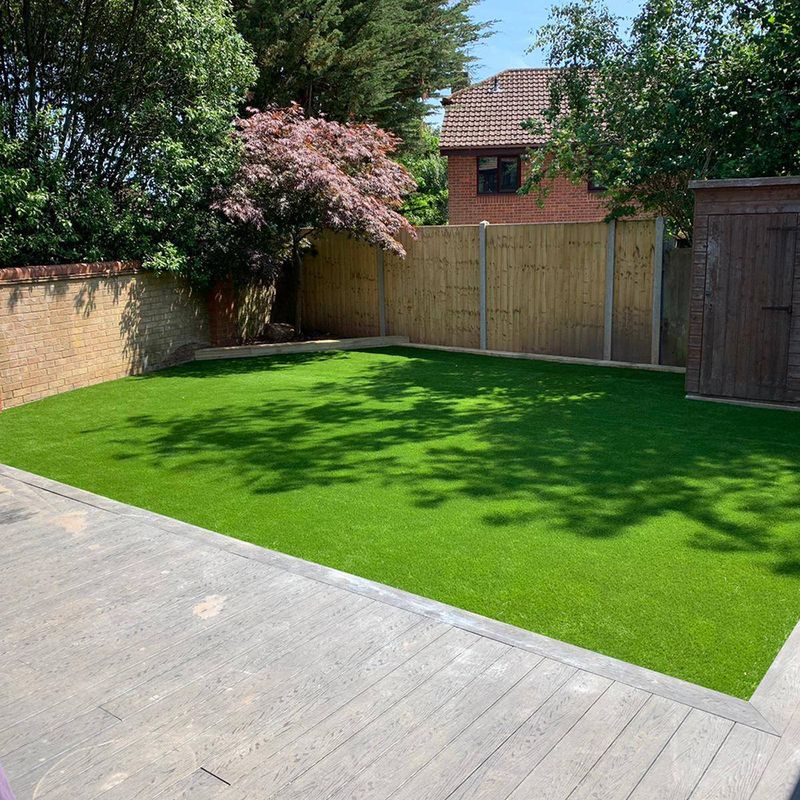
Measuring triangular lawns
Triangular lawns add an intriguing twist to your landscape. You’ll be pleased to know the trick to measuring a triangle isn’t as secretive as the Illuminati! Here’s how to decode it:
Base
Measure the longest side of the triangle, known as the base.
Height
From the opposite corner of the base, measure vertically to the highest point of the triangle.
Calculating the area
To find the area of a triangle in square metres, multiply half of the base by height. (Area = 0.5 x Base x Height) We’ll be calling you Pythagoras in no time!
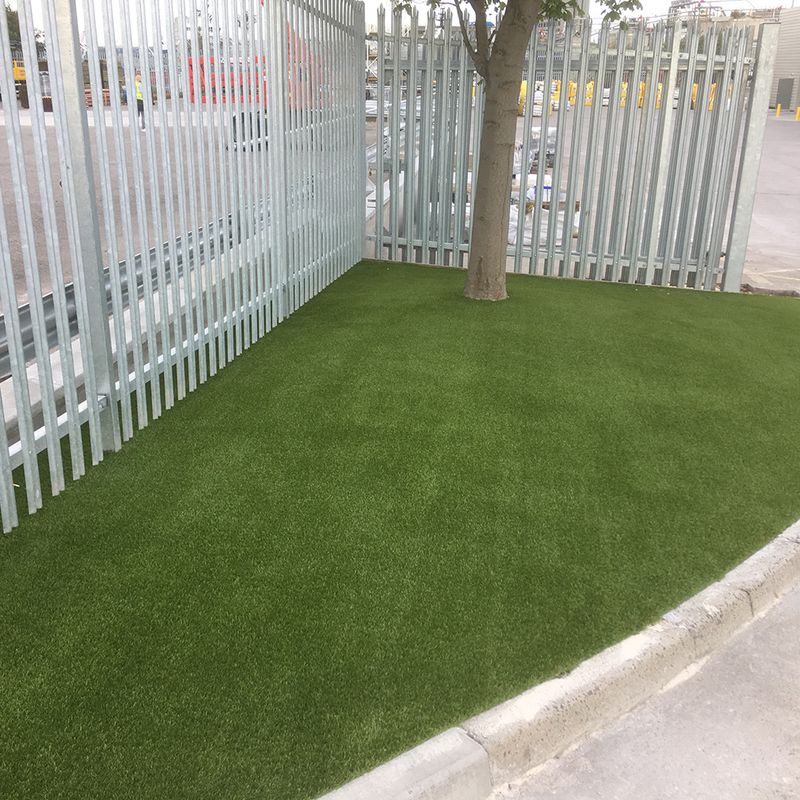
Measuring circular lawns
Curves bring a sense of elegance to your garden that straight lines just can’t match. Now, let’s delve into measuring a circular lawn:
Diameter
Measure straight across the centre (the widest part), from one side to the other, passing through the circle’s centre. Then, make a note of the radius. You can calculate this by dividing the diameter by 2.
Calculating the area
To find the area of your artificial grass circle in square metres, use the formula: Area = π x (Radius)².
If your calculator is limited, π (also known as Pi) is approximately 3.14. A handy tip to remember is that this number spells PIE backwards! (Okay, maybe if you look in a mirror and squint.) To calculate the squared bit, multiply the radius by the radius again.
So, in simplified terms: Area = 3.14 x Radius x Radius
Measuring oval lawns
Much like circular lawns, oval lawn calculations involve diameters and Pi (sorry, not the kind you can eat) with a few more measurements. To measure:
Long diameter
Measure the longest stretch across the oval, passing through its centre.
Short diameter
Measure the shorter stretch that’s perpendicular to the long diameter.
Calculating the area
To find the area of an oval in square metres, use the formula: Area = π x (Long Diameter/2) x (Short Diameter/2).
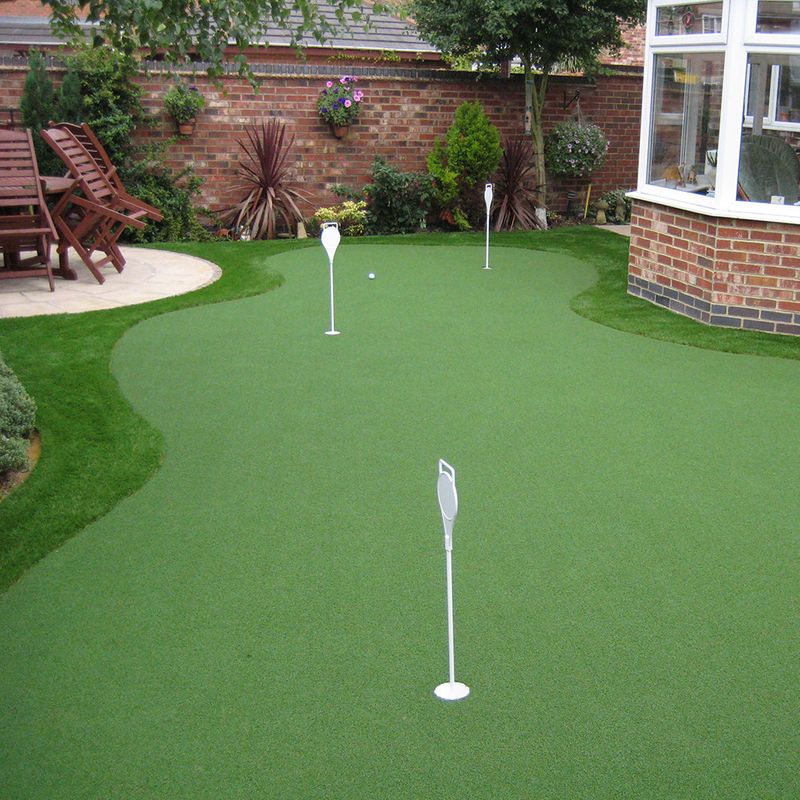
Measuring irregular lawns
For those uniquely shaped lawns, precision remains essential:
Divide and conquer
Break down the irregular shape into smaller, more manageable sections. Use a pencil and paper to draw a bird’s eye view of your lawn to visualise the design. Measure each section individually, as you would for a rectangular, triangular or circular lawn.
Add up
Once you’ve measured each section, add the measurements together to get the total area.
Extra tips for all lawn types
A well-measured lawn lays the foundation for a beautiful and harmonious space. Accurate measurements are not only essential for aesthetic reasons but also for ensuring that you use the resources efficiently during the planning and execution phases.

Double-check
A word to the wise, measure twice to ensure accuracy and safeguard against errors that can lead to costly mistakes. Oversights can lead to ill-fitting artificial grass, and you’ll be left with sad, empty patches. A few extra minutes of measuring will save you from these frustrations!
Converting measurements
If your measurements are in centimetres, divide your calculations by 10,000 to convert the total into square metres or divide by 100,000 if your measurements are in millimetres.
Consider wastage
Keep in mind, there might be wastage due to cutting and fitting, not to mention you’re human! Everyone makes mistakes every so often. It’s a good idea to order an extra 10% to account for this. You don’t want to get halfway through fitting your artificial grass roll only to find you don’t have enough. Otherwise, you might find that you’ll have to pay extra for postage, and the different batches of grass might not even match.
What size is a roll of turf?
When you’re ready to buy your fake grass roll, you’ll likely wonder; How many rolls of turf do I need? Standard roll sizes can vary, but artificial grass generally comes in widths of 2 or 4 metres. Roll lengths can vary greatly, ranging from 1 metre to 25 metres or more, depending on the manufacturer and supplier.

Typically, you’ll find that a turf roll size in the UK is sold in units per linear metre, making calculating how many artificial turf rolls you need a straightforward process.
Before you make your purchase, ensure you have accurate measurements of your lawn’s area, so you can select the correct amount of artificial grass which you can then cut to size, as needed, to fit the shape of your lawn.
How much turf do I need?
To determine how much artificial grass you’ll need, simply calculate the total area of your lawn in square metres (using the appropriate formula for your lawn shape) and then factor in the roll size. Divide the total area by the width of the roll you plan to purchase.
If your lawn’s area is larger than the roll’s length, you’ll need multiple rolls to cover the entire area. In cases where you require more than one roll, proper planning for joining the rolls is essential to ensure a seamless and natural-looking lawn.
Don’t forget to add 10% to account for wastage. This can be calculated by multiplying your total by 1.1. You’ll have to round this up to the nearest whole number, so you get complete coverage.
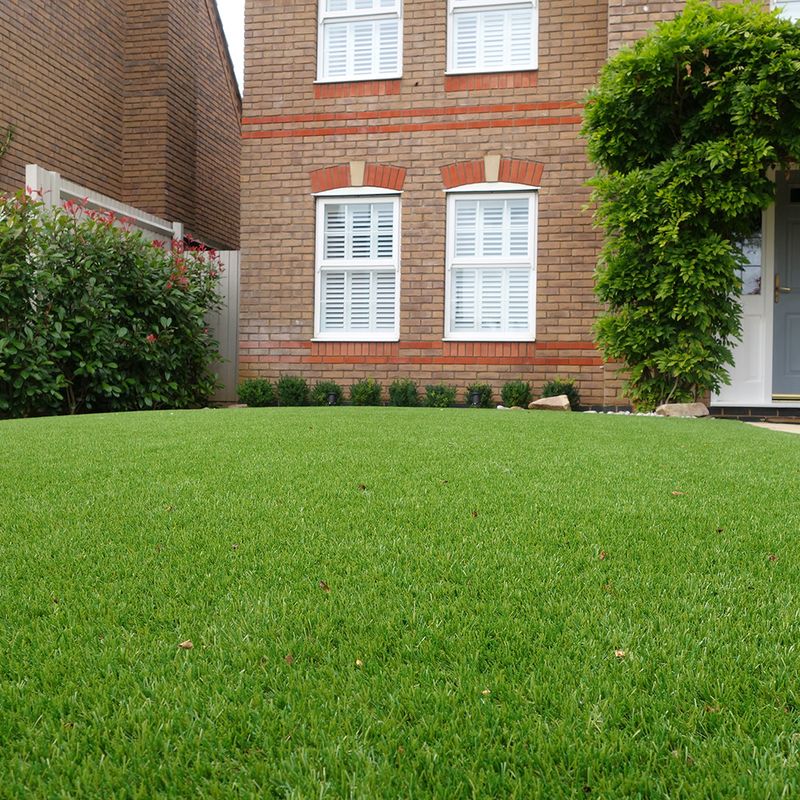
Or, with our handy calculator when you’re purchasing your artificial grass rolls, you can easily enter the dimensions of your lawn, and we’ll calculate how much you need, plus a convenient tool to add 10% wastage!
Marking joins on larger lawns
When your lawn’s dimensions exceed the length or width of a single artificial grass roll, you’ll need to join multiple rolls to cover the entire area. To achieve a professional finish, here’s how you can determine how many rolls you need and how to mark the joins:
Step One: Make note of your lawn’s length and width
Make a note of these dimensions, as they will be crucial for determining the appropriate roll widths.
Step Two: Choose roll widths
Determine the roll width options available, such as 2000mm and 4000mm. Then, decide if you want to lay your turf rolls lengthways (parallel with the length) or widthways (parallel with the width). If your lawn’s width is greater than the roll’s width, you’ll need to join rolls. If the maximum length of the roll exceeds the length of your lawn (typically 25 metres), you’ll also need multiple rolls.
Step Three: Calculating the number of rolls
To determine the number of rolls required, first, divide the length or width of your lawn by the chosen roll width. Round up to the nearest whole number to ensure complete coverage. The formula is:
Number of Rolls = Lawn Dimension/Chosen Roll Width
For example, if your lawn is 10 metres in length and you’re using 2000mm rolls, the calculation would be:
Number of Rolls = 10000mm/2000mm = 5 (rolls)
In terms of selecting the appropriate width, choose the size that calculates to the nearest whole number to minimise wastage.
For example, if you picked the 4000mm rolls and your lawn is 10 metres in length, the calculation would be:
Number of Rolls =10000mm/4000mm = 2.5 (rolls)
Since you can’t have half a roll, this would be rounded up to three, so you’d have approximately 2000mm wide of spare turf.
Step Four: Calculating the length of rolls
For each roll, measure the longer dimension of your lawn that aligns with the roll’s orientation. This measurement will help you avoid any unnecessary wastage.
For example, if you’re laying the rolls lengthways and your lawn is 15 metres long, you’ll need rolls at least 15 metres in length to ensure each roll covers the entire length without any gaps.
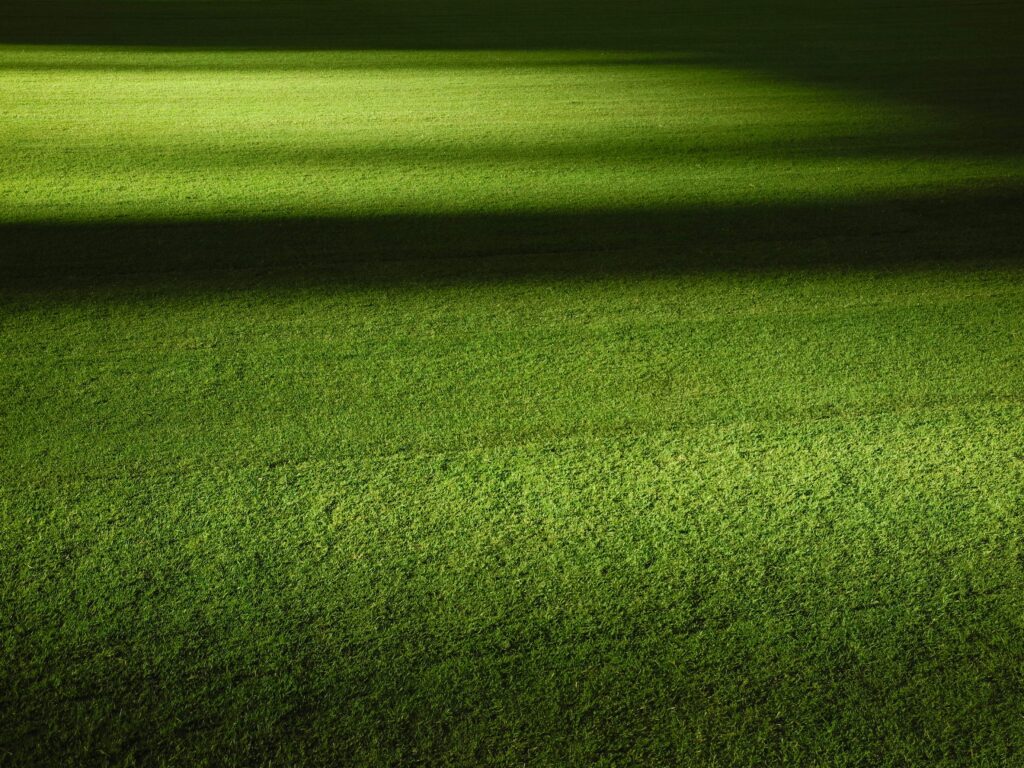
Step Five: Account for overlaps
Remember to also account for overlapping sections between rolls. A 100-150mm overlap along the joins ensures a smooth and seamless transition between adjacent rolls.
Step Six: Mark the joins
Once you’ve calculated the number of rolls needed and factored in the overlaps, mark the positions where the rolls will join. Use temporary markers like masking tape, spray paint or even a stick to indicate the exact spots where each roll will be placed.
Final thoughts
Measuring your garden for artificial grass might seem like a task suited for a mathematician, but with our step-by-step guide, you’re equipped to tackle lawns of all shapes and sizes. You can now turn your outdoor space into a visually stunning yet low-maintenance environment with a seamless fit. From rectangles to circles, triangles to irregular shapes, you can tackle precise lawn measurements with ease, so you have the right amount of artificial grass.


















